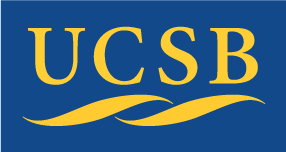|
Geometry, Topology, and Physics Seminar, Winter 2008
Organizers:
Andreas Malmendier
and Dave Morrison.
Meets 4:00 - 5:30 p.m. Fridays in South Hall 6635.
Various topics relating geometry, topology, and physics.
Other Quarters: [
Fall, 2021;
Winter, 2020;
Fall, 2019;
Spring, 2018;
Winter, 2018;
Fall, 2017;
Spring, 2017;
Wnter, 2017;
Fall, 2016;
Spring, 2016;
Winter, 2016;
Fall, 2015;
Spring, 2015;
Winter, 2014;
Fall, 2013;
Fall, 2012;
Fall, 2011;
Winter, 2011;
Spring, 2010;
Winter, 2010;
Fall, 2009;
Spring, 2009;
Winter, 2009;
Fall, 2008;
Spring, 2008;
Winter, 2008;
Fall, 2007;
Spring, 2007;
Winter, 2007;
Fall, 2006
]
| Jan. 11 |
Dave Morrison (UCSB)
In 1990, Candelas, de la Ossa, Green, and Parkes used the then-new technique of mirror symmetry
to predict the number of rational curves of each fixed degree on a quintic threefold. The
techniques used in the prediction were subsequently understood in Hodge-theoretic terms: the
predictions are encoded in a power-series expansion of a quantity which describes the variation
of Hodge structures, and in particular this power-series expansion is calculated from the
periods of the holomorphic three-form on the quintic, which satisfy the Picard-Fuchs
differential equation.
In 2006, Johannes Walcher made an analogous prediction for the number of holomorphic disks on
the complexification of a real quintic threefold whose boundaries lie on the real quintic, in
each fixed relative homology class. (The predictions were subsequently verified by
Pandharipande, Solomon, and Walcher.) This talk will report on recent joint work of Walcher and
the speaker which gives the Hodge-theoretic context for Walcher's predictions. The crucial
physical quantity "domain wall tension" is interpreted as a Poincare normal function, that is,
a holomorphic section of the bundle of Griffiths intermediate Jacobians. And the periods are
generalized to period integrals of the holomorphic three-form over appropriate 3-chains (not
necessarily closed), which leads to a generalization of the Picard-Fuchs equations.
Transparencies;
Additional
lecture notes;
Lecture notes
of the entire talk.
|
| Jan. 18 |
Dan Freed (UT Austin)
In joint work with Jacques Distler and Gregory Moore we develop
the theory of Ramond-Ramond fields on orientifolds in string theory.
The mathematics we encounter includes the localization theorem
in (twisted) equivariant KO-theory, KO-theoretic Wu classes, the
self-duality of KO, etc. We derive the gravitational contribution
to Ramond-Ramond charge, generalizing a previous result in Type I
(the Green-Schwarz anomaly cancellation). Over the rationals
this agrees with the formula derived by Morales-Scrucca-Serone from
the worldsheet point of view.
Audio [ mp3,
wma ];
Lecture notes [
version 1;
version 2].
|
| Jan. 25 |
Mike Hopkins (Harvard University)
This talk will be an informal follow-up to the talk
"Topological Field Theories" given by the speaker
in the Mathematics
Colloquium on Thursday, 01/24/08.
Audio [ mp3,
wma ];
Lecture
notes.
|
| Feb. 1 |
No meeting
|
| Feb. 8 |
Robert Maier (University of Arizona)
Many identities in classical function theory involve algebraic
changes of the independent variable. This includes transformations of
elliptic integrals, of combinatorial generating functions, and in general,
transformations of the solutions of Fuchsian equations, such as
hypergeometric and Heun equations. We shall explain how many such
identities come `from geometry', since they have a modular origin.
They are induced by covering relations between (rational) families of
elliptic curves, and in fact, are relations between the solutions of
the associated Picard-Fuchs equations.
Audio [ mp3,
wma ] (first 30 minutes);
Transparencies.
|
| Feb. 15 |
David Morrison (UCSB)
Calabi-Yau threefolds are compact Riemannian manifolds with
holonomy SU(3), and as such, are always projective algebraic varieties. As
algebraic varieties, there is a natural generalization to singular
Calabi-Yau threefolds (although the existence of generalized metrics on
these singular spaces is not known). Moreover, in the application of
Calabi-Yau threefolds to the study of string compactification, singular
Calabi-Yau threefolds play an important role. We will review what is known
about the `Calabi-Yau singularities' on such spaces, with an eye on
recent developments and applications.
Audio [ mp3,
wma ];
Lecture Notes.
|
| Feb. 21 |
No Meeting
|
| Feb. 29 |
Allan Adams (MIT)
In this talk I will discuss recent progress in string theory on the study of the
moduli space of complex manifolds with SU(3) structure. In the special case of Kahler manifolds, these are
just Calabi-Yaus; more generally, they are non-Kahler (but balanced) manifolds whose SU(3)-holonomy
connection is not metric compatible. By studying Heterotic conformal field theories on very special examples
of these manifolds (which endow the manifold with several decorations), we will find interesting paths on
moduli space along which various 2- and 3-cycles shrink and grow: when the 2-cycle is large, we will find a
Calabi-Yau; when the 3-cycle is large, we will find a non-Kahler manifold. Connecting these moduli spaces
requires a non-local operation in the conformal field theory - bosonization and fermionization - which can
be thought of as a kind of local surgery on the classical geometry.
Audio [ mp3,
wma ];
Lecture Notes [ version 1,
version 2].
|
| Mar. 7 |
David Morrison (UCSB)
We will continue our discussion of singularities on Calabi-Yau spaces,
focussing on singularities which have a blowup that is a smooth Calabi-Yau space.
Audio [ mp3,
wma ];
Lecture Notes [ version 1,
version 2].
|
| Mar. 14 |
Katrin Wendland (University of Augsburg)
To certain geometries string theory associates conformal field theories.
We discuss techniques to perform the reverse procedure: To recover
geometric data from abstractly defined conformal field theories. This is
done by introducing appropriate notions of limits of conformal field
theories and their degenerations, and by interpreting the resulting
structures by methods known form noncommutative geometry.
Seminar cancelled due to travel problems.
|
|
|



